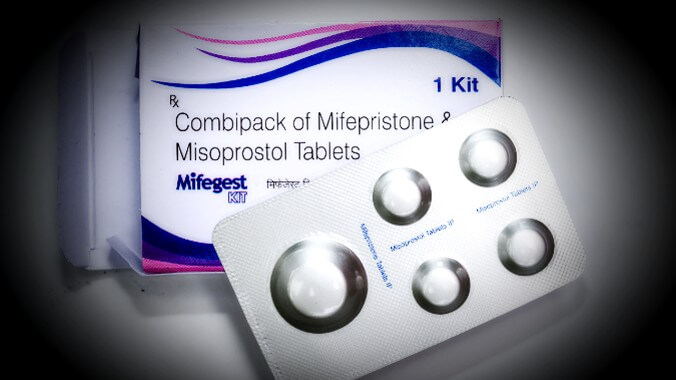The ‘WTF Is Happening’ Guide to the Supreme Court Abortion Pill Case
Here’s everything you need to know about the legal challenge that could roll back telemedicine access to mifepristone nationwide.
Photo: Shutterstock AbortionPolitics
On Tuesday morning, the Supreme Court will hear a challenge to the abortion drug mifepristone, one of two medications commonly used in medication abortion since being approved in September 2000. The case proves yet again that overturning Roe v. Wade did not “send abortion back to the states,” as some Justices said and activists and GOP lawmakers wanted everyone to believe. Conservative advocates want to ban abortion nationwide and they’ll try anything to achieve that goal. Abortion pills are an easier target than procedures, as they’re newer than procedural abortions. (Still, there’s a second abortion case this term about whether hospitals have to perform abortions when people’s health is threatened, versus only when their life is imminently at risk.)
The case is called Alliance for Hippocratic Medicine v. FDA, and it involves a group of doctors suing the Food and Drug Administration over mifepristone, the first drug in the FDA-approved medication abortion protocol. (Mifepristone halts a pregnancy from progressing, then a second medication, misoprostol, causes contractions to induce a miscarriage.) The suit, which claims the FDA shouldn’t have made mifepristone any easier to get in 2016 and 2021, was originally filed in November 2022 and a final ruling isn’t expected until late June, which is when the court often drops its biggest turds.
Here’s what is going on, written in FAQ format, and starting with the biggest Q of all.
Could the Supreme Court ban the drug?
No, but they could make it much more difficult to get. In 2016, the FDA updated the label for mifepristone to reflect studies showing it was safe and effective through 10 weeks of pregnancy up from the original seven weeks. It also reduced the number of in-person appointments required to get the drug from three down to two. (Patients still had to get the drug in person.) In 2021, the Biden administration said providers could prescribe mifepristone via telemedicine during the covid pandemic, a change it made permanent later that year.
The court will decide whether or not a group of anti-abortion doctors, the Alliance for Hippocratic Medicine, have legal standing to sue the FDA over the 2016 and 2021 changes, and, if they do, whether the Supreme Court should uphold a ruling undoing those changes. That is, slap old restrictions back on the drug.
How big of a deal would those restrictions be?
Medication abortion has been the most common method for a few years now. (“Common” not “popular” because 40% of all clinics only offer medication abortions, and at Planned Parenthood that share is 58%, so it’s possible more people would choose procedures if they were more accessible.) In 2023, nearly two-thirds of abortions were done with pills, up from just over half in 2020.
Providers could still prescribe mifepristone off-label through 10 weeks of pregnancy, but undoing the ability to prescribe it via telemedicine would be a big blow. People would, once again, have to go to clinics to get pills they’ll take at home, and after the fall of Roe there are fewer clinics open and they’re all much busier.
Ma’am, I live in California, this doesn’t affect me.
Oh, here’s where you’re wrong. Whatever the court decides will apply nationwide, even in bright blue California and New York. Look again at those statistics above about clinics that don’t offer procedural abortions—restricting mifepristone would drastically cut access to abortions in the formal healthcare system. It could be harder for people across the country to end their pregnancies.
(PSA: There are also community support networks mailing pills to people all over the country. People can also have an abortion using only misoprostol. The website Plan C has a ton of info.)
-

-

-

-

-

-

-

-

-

-

-

-

-

-

-

-

-

-

-

-

-

-

-

-

-

-

-

-

-

-

-

-

-

-

-

-

-

-

-

-








































